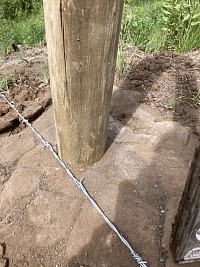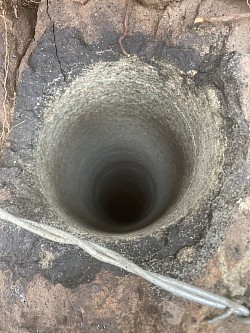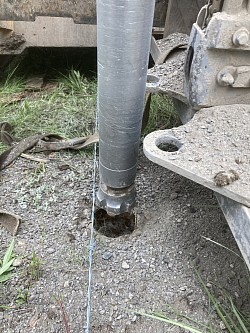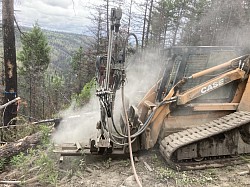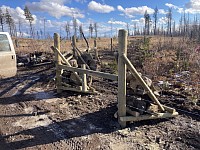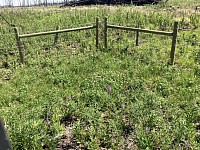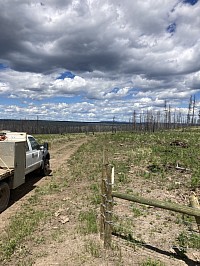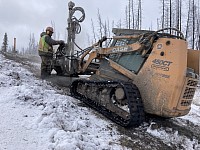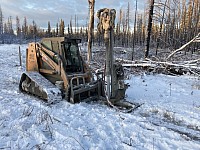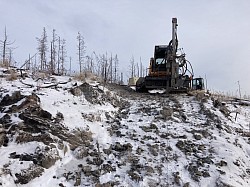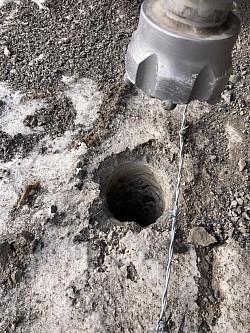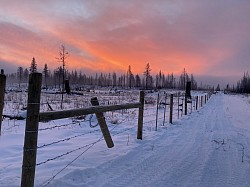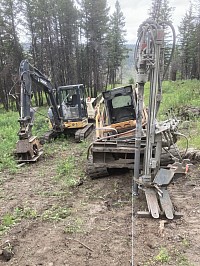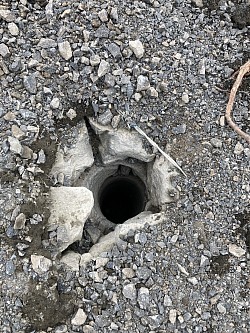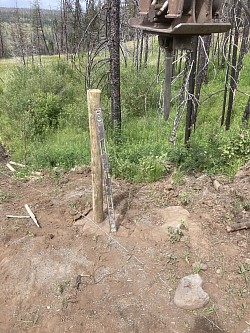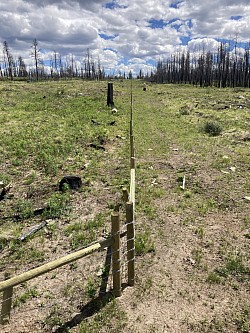Solutions for Solid Rock
Hard Rock Fencing
The old way
The problem with fencing in hard rock is the inability to set posts to the required depth. As you can see in this photo, these posts are weak as they are only 18” in the ground. A huge amount of weight is needed to give them strength. The amount of labour and material involved in constructing these rock jack brace posts is immense, making it a costly procedure
The new way
Superior product
DTH Hammer drilling fence posts
First we drill a hole, then vibrate the post to the specified depth. The theory is the same as using a pilot hole made by a steel probe (in good ground). It’s just a bit bigger and through solid rock. When the post gets vibrated in, it is STRONG! VERY STRONG!
Saving time, saving money
Winter projects
Countless options for post installation
We are able to drill 4” and 5” holes with our current set up. Using a bigger hammer and bit we can get bigger holes if needed. We are open to suggestions and will work together to achieve a solution for hard ground fencing.
We can also drill for galvanized steel pipe and chain link.
I feel drilling and using 2 3/8” drill steel in this application and welding steel rails can be another option. This practice is commonly used in the lower 48. It would make amazing livestock handling systems, rather then the use of free standing livestock panels.
The options are endless, please bring your ideas.
Managing hard ground
There are many ways to manage hard ground conditions where fence posts cannot be properly driven to the required depth. When applicable, DTH hammer drilling is probably the best method.
It isn’t the only method.
Moving the fence is one option.
Rock jacks and A-frames are still a very good ministry approved method.
If the proposed fence line is filled with large broken rock or boulders, we can build a rock fence. This procedure involves the stacking of large boulders a min of 48” high.
Another way is to drill smaller 1”1/2” holes and use metal T-post as line posts. This method is only recommended in very remote, hard to access or low pressure areas. It costs about the same as DTH hammer drilling. The problem with Metal T-posts is that they bend and rot quite easily.
